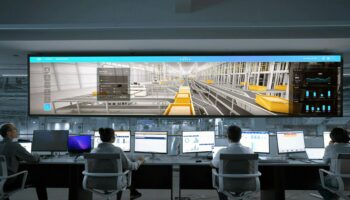Introduction:
Agriculture, the bedrock of civilization, has been evolving for millennia. In today’s world, technology is ushering in a new era of agriculture, revolutionizing the way we grow, harvest, and distribute crops. From precision farming to AI-powered analytics, technology enhances productivity, sustainability, and food security. In this article, we will explore the multifaceted role of technology in modern agriculture.
The Agricultural Revolution: Then and Now
Traditional Agriculture
For thousands of years, agriculture was a labor-intensive and weather-dependent endeavor. Farmers relied on manual labor, rudimentary tools, and their intuition to cultivate crops and raise livestock. Success was often at the mercy of unpredictable weather patterns and natural disasters.
Modern Agriculture
The advent of technology has transformed agriculture into a high-tech industry. Today, farmers and agribusinesses leverage a wide array of cutting-edge tools and techniques to optimize every aspect of the farming process. These innovations are reshaping the future of food production in several key ways:
Precision Agriculture: Farming with Precision
Precision agriculture often referred to as smart farming, is a technology-driven approach that maximizes yields while minimizing waste. It involves the use of various technologies to collect and analyze data about soil conditions, weather patterns, crop health, and more. Here are some key components:
- Satellite Imaging and GPS
Satellite imaging and GPS technology allow farmers to create precise maps of their fields. This data helps optimize planting patterns, irrigation, and resource allocation.
- Sensors and IoT
IoT (Internet of Things) devices and sensors provide real-time data on soil moisture, temperature, and nutrient levels. Farmers can make data-driven decisions to ensure crops receive the right amount of water and nutrients.
- Drones
Drones equipped with cameras and sensors can monitor crop health and identify issues like pest infestations or disease outbreaks. This early detection saves both time and resources.
- Automated Machinery
Autonomous tractors and machinery can perform tasks like planting, harvesting, and weeding with precision, reducing the need for human labor.
Data Analytics and Artificial Intelligence
The agriculture sector generates vast amounts of data. AI and data analytics technologies help farmers make sense of this data and extract valuable insights. Some applications include:
- Crop Yield Prediction
AI models analyze historical data, weather forecasts, and soil conditions to predict crop yields accurately. It helps farmers plan for storage, transportation, and sales.
- Pest and Disease Detection
Machine learning algorithms can identify signs of pests or diseases in crops by analyzing images and data from sensors. Early detection allows for targeted interventions.
- Livestock Management
Farmers use AI-driven systems to monitor the health and well-being of livestock. Wearable devices and sensors collect data on animal behavior and vital signs, enabling early disease detection.
Sustainable Agriculture: Nurturing the Planet
Sustainability is a top priority in modern agriculture. Technology plays a crucial role in minimizing environmental impact and conserving resources:
- Precision Irrigation
Smart irrigation systems deliver the right amount of water to crops, reducing water wastage and conserving this precious resource.
- Drip and Micro-Irrigation
Drip and micro-irrigation systems provide water directly to the root zone of plants, improving water efficiency.
- Soil Health Management
Technology helps farmers assess soil health and implement Practices like crop rotation and cover cropping to improve soil quality and reduce the need for synthetic fertilizers.
- Genetic Engineering
Genetic engineering allows the development of crops that are more resistant to pests and diseases, reducing the need for chemical pesticides.
The Future of Agriculture:
Challenges and Opportunities
As technology continues to advance, the future of agriculture holds tremendous promise. However, it also presents challenges that must Addressed:
- Data Privacy and Security
With the increasing use of data and IoT devices, data privacy and Security become paramount. Farmers need to ensure that sensitive agricultural data is protected from cyber threats.
- Digital Divide
Access to technology is not uniform across the agricultural sector. Small-scale and resource-constrained farmers may face barriers in adopting advanced technologies.
- Environmental Concerns
While technology can enhance sustainability, its misuse can harm the environment. Striking the right balance between technology-driven productivity and ecological preservation is essential.
- Skill Gap
Farmers and agricultural workers need training and education to harness the full potential of modern agricultural technologies. Bridging the skill gap is crucial for successful adoption.
- Regulatory and Ethical Issues
The development and use of genetically modified crops and AI-powered agricultural systems raise regulatory and ethical questions that must addressed transparently.
Conclusion
Technology is reshaping agriculture into a dynamic, data-driven, and sustainable industry. From precision agriculture and data analytics to genetic engineering and automated machinery, innovation drives increased yields, reduced waste, and improved resource management. As the global population continues to grow, the role of technology in agriculture becomes even more critical in ensuring food security and environmental stewardship.
The future of agriculture lies in the hands of those who embrace technological advancements while addressing the ethical, environmental, and societal challenges that accompany them. As we navigate this ever-evolving landscape, one thing remains clear: technology will continue to be a driving force in feeding the world and nurturing our planet.
- THE EVOLUTION OF PLASTIC SURGERY - 17 June 2024
- CHOOSE THE RIGHT PERSONAL INJURY LAW FIRM IN CHARLOTTE NORTH CAROLINA - 16 June 2024
- Email UX optimization, offering actionable insights - 16 June 2024






1 Comment